What's New
Displaying results 3491 - 3500 of 4052
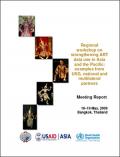
Resource | Publications,
Antiretroviral treatment (ART) is extending the lives of people living with HIV (PLHIV). Though ART has become more widely accessible globally since the early 1990s, getting antiretroviral drugs (ARV) to those who need it most continues to be a challenge. As access increases, so does the need to assure that systems are in place to report on outputs and outcomes in a timely manner. Such data are vital to ART programs, as not only do they assist in tracking progress towards achieving global goals, but they also inform the day to day implementation of treatment programs. Without an adequate measurement of what is being done, countries risk losing opportunities to prevent premature deaths and potential ARV resistance; they also do not have the information critical to assure PLHIV on ART receive appropriate care at the appropriate time to improve and maintain their quality of life.
Acknowledging the need to share experiences and lessons learned in order to inform future direction, the U.S. Government (USG), World Health Organization (WHO) and other partners organized the first “Regional workshop on strengthening ART data use in Asia and the Pacific: examples from USG, national and multilateral partners” in Bangkok, Thailand from 18-19 May 2009. This two day workshop provided a forum for national and international experts to present lessons learned and discuss specific challenges faced in most resource-poor settings throughout the region.
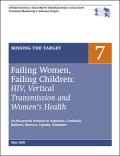
Missing the Target 7: Failing Women, Failing Children: HIV, Vertical Transmission and Women’s Health
Resource | Publications,
Governments and UN agencies have failed to meet their international commitments and should be called to account. Despite the relative ease of delivering the antiretroviral prophylaxis to prevent vertical transmission progress has been slow, with global coverage rising from 9 percent in 2004 to 33 percent coverage in 2007. At least three quarters of HIV-positive pregnant women in 61 countries, including Cameroon, Ethiopia, India and Nigeria, are still not receiving this intervention.
Moreover, it is not enough merely to ensure access to ARV prophylaxis. Quality is equally important, and in this regard too the options for women in poorer countries are far less appropriate and effective. In the developed world, all women who want and need ARV prophylaxis can obtain triple-dose combination therapy, which reduces the risk of vertical transmission to a mere 2 percent. About half of women receiving ARV prophylaxis in the global South, meanwhile, are provided with single-dose nevirapine treatment. This regimen reduces transmission risk by just over 40 percent, however, and puts women under the risk of developing resistance to nevirapine, which is the backbone of many HIV treatment regimens in general.
Our research for this report, Missing the Target 7, has reinforced the need for governments, UN agencies, donors and indeed civil society to look beyond the magic bullet of administering a pill each to mother and baby in order to stem the annual toll of preventable infections and deaths in newborns.
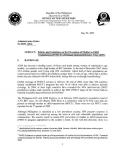
Resource | Laws and Policies,
These guidelines are intended to provide guidance on PMTCT of HIV among sexually transmitted infection (STI), maternal and child health (MCH), family planning (FP), sexual and reproductive health (SRH) service providers covering public and private, community-based health facilities and the civil society.

Resource | Presentations,
This presentation is about:
- Epidemiology of HIV among young people in Asia
- The ‘window of opportunity’ - mostly HIV negative young people in schools in Asia
- One size fits who? The need to let data direct tailored strategies, policies and programs
- General policy and programming implications
- Implications for education sector responses
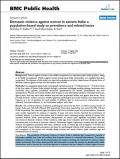
Resource | Publications,
Violence against women is now widely recognised as an important public health problem, owing to its health consequences. Violence against women among many Indian communities on a regularly basis goes unreported. The objective of this study is to report the prevalence and other related issues of various forms of domestic violence against women from the eastern zone of India.
The prevalence of domestic violence in Eastern India is relatively high compared to majority of
information available from India and confirms that domestic violence is a universal phenomenon. The primary healthcare institutions in India should institutionalise the routine screening and treatment for violence related injuries and trauma. Also, these results provide vital information to assess the situation to develop public health interventions, and to sensitise the concerned agencies to implement the laws related to violence against women.
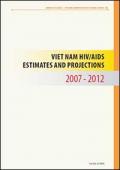
Resource | Publications,
A second round of estimates and projections was conducted in 2007 to estimate future burden and impacts of HIV/AIDS in order to inform national programs anticipating prevention and care needs in Viet Nam. Similar to the 2003 estimates and projections process, seroprevalence data, population size estimates, and pertinent data from ad hoc studies were entered into the Estimation and Projection Package (EPP) Version 3.0 R9 to generate low, medium, and high scenarios of the HIV epidemic. The epidemic curves generated by EPP were then combined with antiretroviral therapy (ART) and prevention of mother to child (PMTCT) data into a second modeling program, SPECTRUM Version 3.14, for further estimates of prevalence, treatment needs, and AIDS related mortality, among other important data presented in this report. National and region-specific outcomes were generated for the 1990-2012 period in Viet Nam and apply to both the general and high risk populations nationwide.

Resource | Fact Sheets,
The fourth round of Integrated Biological and Behavioral Surveillance (IBBS) Survey among female sex workers (FSWs) was conducted in 2009. A total of 600 FSWs were recruited for the study, out of the 400 were recruited from six study sites representing 16 districts between Jhapa district in the Eastern region and Rupandehi district in the Western region along the highway in the Terai.

Resource | Fact Sheets,
The fourth round of IBBS among truckers was conducted in 2009. A total of 400 truckers were recruited in the sample from the Pathlaiya study site. Data for the study was collected from February 28 to April 25, 2009.
The survey measured HIV and syphilis prevalence among truckers along with information on variables which are associated with a risk of HIV infection and sexually transmitted infections (STIs), such as condom use, sexual behaviors, knowledge of HIV/AIDS, reported cases of STIs, STI treatment behaviors, exposure to HIV/AIDS messages and alcohol and drug use habits.
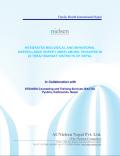
Resource | Publications,
The Integrated Biological and Behavioral Surveillance (IBBS) survey among truckers was launched on February 20, 2009. A total of 400 truckers were recruited for the study at the Pathlaiya study site. Data for the study was collected between February 28, 2009 and April 25, 2009. The survey measured HIV and syphilis prevalence among truckers along with information on variables which are associated with a risk of HIV infection, such as condom use, sexual behaviors, knowledge of HIV/AIDS, reported cases of sexually transmitted infections (STI), STI treatment behaviors, exposure to HIV/AIDS messages and alcohol and drug habits.
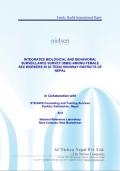
Resource | Publications,
The fourth round of the Integrated Biological and Behavioral Surveillance (IBBS) survey among female sex workers (FSW) in 22 Terai highway districts was launched on February 20, 2009. A total of 600 female sex workers were recruited for the study, out of whom 400 were recruited from six study sites representing 16 districts between Jhapa in the eastern region and Rupandehi in the western region along the highway in the Terai. Another 200 were recruited from three sites representing six districts between Kapilvastu in the western region and Kanchanpur in the far western region. Data for the study were collected from February 28 to April 25, 2009.





